Music Accents
Home » Piano Notes » Music Accents
It's nice to compare musical accents with the way people have different accents.
When we speak about accents in language we relate to how different people pronounce the same language.
Some roll their rrrrrr... Or give extra expression to different syllables.
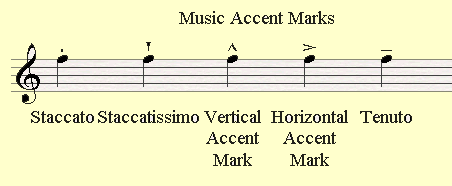
How come people have different accents? People inherit the accents from the way their parents speak, their friends, the place they where they were born, the location of their area (people often have different accents in different areas of one country) and so on.
Music accents are quite similar in that manner. Everyone grasps its own expressive way through time, and there are endless ways to express yourself.
However, some rules should be applied in order to be understood.
When we first discussed rhythm we said that the first beat or count in every measure is heavier,
that is to say that it's more accented. Therefore it is called the downbeat
Further more, all the beats should be normally stronger then the off beats, but not all on beats are equally strong.
In classical musical the first and the third beats are stronger then the second and the fourth beat. The second and fourth beats just lead to the stronger accented beats.
In Jazz however, we go the other way around. The second and the fourth beat become the stronger beats what makes everything much groovier in the house.
Back to the classical world, a few important music accents marks have been invented in order to tell you how you should articulate a note. You can call it the dialect if you wish.
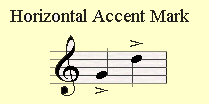
The Horizontal Accent:
This is what most musicians refer to when
they speak about an "Accent Mark".
When you see an ACCENT SIGN over or under a note you should be playing that note LOUDER.
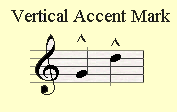
The Vertical Accent:
also called the "housetop" means that you have to
be play a certain note MORE FORCEFULLY and usually SHORTER then the horizontal accent.
You'll see that accent mark less often and usually in an unconsistent way.
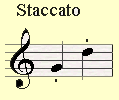
Staccato:
This music accent tells us we have to add PAUSAS between two notes,
yet we're still supposed to hear the pitch of the tone clearly.
In other word the last part of the note should be silenced.

Staccatissimo:
When we see the Staccatissimo sign, we're usually supposed to articulate a note
SHORTER then the staccato. It will be so short that it will be harder
to hear the pitch of the tone on the piano.
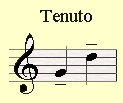
Tenuto:
indicates that a note should be played for its full value.
The result is that we even prolong it a little. Sometimes it is natural to play Tenuto notes a
bit louder and to separate that note with a little space from surrounding note to give
it more importance.
In the next example of "March Militaire" by Schubert you'll see an example of a horizontal note combined with a staccato accent mark.
And yes, it is indeed possible and common to combine between two different music accent marks.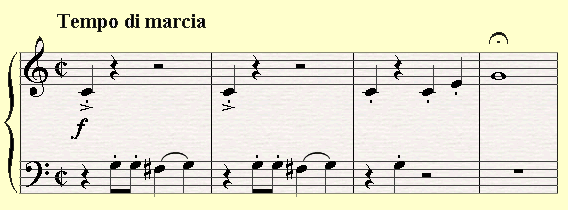
Here are to great piano pieces with an accent sign.
| Name of the Piece | MP3 | |
| The Witch of the Forest | Download | |
| Nutcracker Russion Dance | Download |
Are there other way to create music accents?
Sure, think about it... the longer a note is, the more naturally accented it is.
You simply hear it longer and therefore you make it more important.
There's also a limit to how long you can prolong a note on the piano,
so longer notes have to be naturally stronger when you produce them.
The height of the pitch has a natural accent as well. The highest tone in a piece will be naturally more accented since it is a peak which makes it most important.
Think of it, when you have to sing a high note you simply can't sing it softly. Your voice demands you to raise your volume. In piano we relate to that although we don't sing. Pressing a key instead of singing allows us to play the higher notes soft as well, but the higher notes in a piece get more attention and therefore are more accented in a natural way.

In order to take the next step in reading piano notes you should definately check out the Rocket Piano Ultimate Learning kit. Rocket Piano provides an amazingly handy and effecive piano course on various issues such as reading piano notes, playing piano by chords, piano technique and more.
You're going to love the way they work systemically with the help of their useful audio
and video files that are short and to the point. By working
with Rocket Piano you basically guarantee that you'll become pro at reading piano notes
(And the big bonus is you'll learn to play piano by ear as well).
Check out the Ultimate Piano Learning Kit of Rocket Piano Now!














